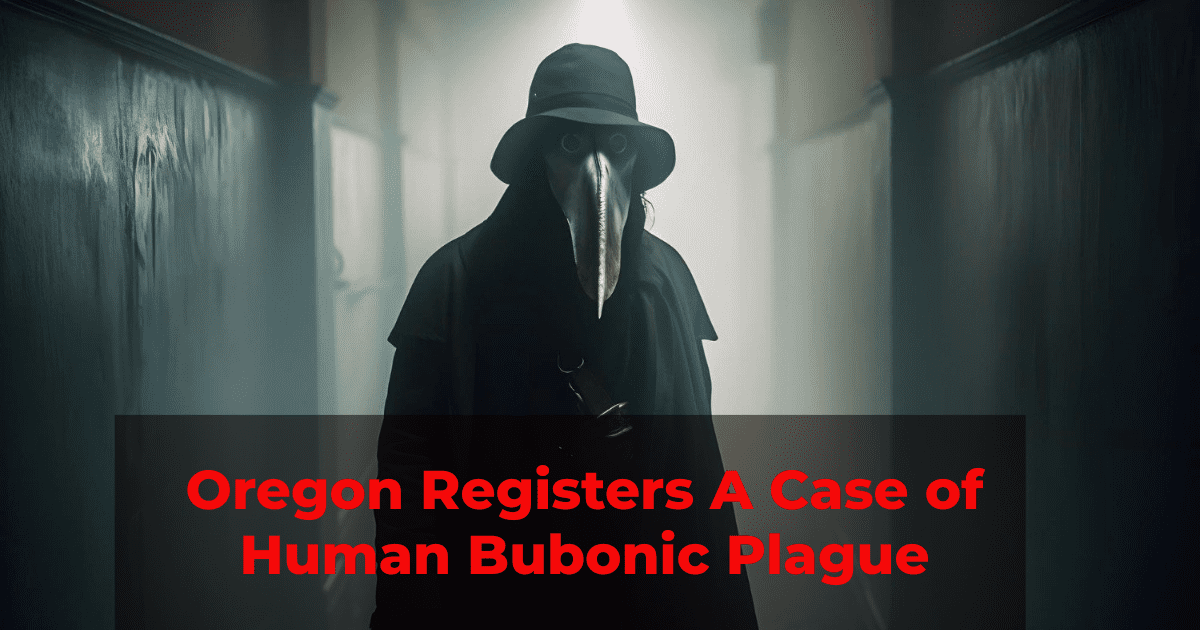Bubonic Plague Treatments
The Case in Oregon: A Likely Transmission from Pet Cat
In a recent announcement by public health officials in Deschutes County, Oregon, a resident was diagnosed with bubonic plague, marking the state’s first human case in eight years.
The individual, whose identity remains undisclosed, was likely infected by their pet cat, according to Dr. Richard Fawcett, the Deschutes County Health Services Officer.
Bubonic plague is often transmitted through a bite from an infected flea or contact with an infected animal. While human-to-human transmission is rare, pets can serve as carriers, as seen in this case.
Swift Intervention by Health Officials
In response to the diagnosis of bubonic plague in the residents, health authorities promptly implemented a series of measures aimed at curbing the potential spread of the disease within the community. These decisive actions were pivotal in mitigating the risk and safeguarding the health of both the diagnosed individual and those in close proximity.
One of the immediate steps taken involved identifying and reaching out to the close contacts of the affected resident, including individuals who may have had direct interactions with the person and their pet. Recognizing the potential for contagion through such contacts, health authorities ensured that these individuals received appropriate medications promptly. The administration of these medications served as a preventive measure, intended to thwart the development of illness in those who may have been exposed to the bacterium causing bubonic plague.
This proactive approach underscores the commitment of health authorities to not only treat the diagnosed case but also to preemptively address the possibility of further infections. By providing medication to close contacts, health officials aimed to interrupt the potential transmission of the disease, thereby minimizing the risk of additional cases emerging within the community.
In essence, the swift and decisive measures taken by health authorities reflect a dedication to public health and a strategic response to contain the spread of bubonic plague. This approach not only prioritizes the well-being of the diagnosed individual but also demonstrates a broader commitment to the health and safety of the community at large.
Bubonic Plague: An Overview
Historical Context, Causes, and Transmission
Once known as the Black Death, bubonic plague has a long and harrowing history, dating back to the Justinian plague in 541 AD. The infamous Black Death pandemic ravaged Europe in the 14th century, claiming millions of lives.
Bubonic plague, an infectious disease with a notorious historical legacy, is instigated by the bacterium Yersinia pestis. The primary mode of transmission for this menacing ailment is closely entwined with the ubiquitous presence of fleas, particularly those that infest rodents such as rats, mice, and squirrels.
The intricate web of transmission begins with the bacterium Yersinia pestis, which finds a hospitable habitat within the bodies of these rodents. Fleas, acting as carriers of the bacterium, become unwitting accomplices in the dissemination of the disease. These fleas parasitize on the blood of infected rodents, thereby acquiring the Yersinia pestis bacteria within their system.
The transmission of bubonic plague to humans occurs through the intricate interplay between fleas, infected rodents, and unsuspecting individuals. When an individual is bitten by an infected flea, the Yersinia pestis bacterium is introduced into the human bloodstream. Alternatively, direct contact with animals carrying the bacteria, such as through handling or being near infected creatures, can also lead to transmission.
This dual mechanism of transmission, facilitated by the pervasive presence of fleas and the close interaction between humans and the animal reservoirs of Yersinia pestis, underscores the complexity of the bubonic plague’s lifecycle. Vigilance in avoiding flea bites and minimizing contact with potentially infected animals emerges as a critical preventive measure in regions where the disease persists, emphasizing the intricate dynamics of the transmission cycle that contributes to the persistence of bubonic plague as a public health concern.
Symptoms and Diagnosis And Bubonic Plague Treatments
Modern Treatments and Preventive Measures
Antibiotic Therapies
Fortunately, modern antibiotics have revolutionized the treatment of bubonic plague. Medications such as Ciprofloxacin, levofloxacin, and moxifloxacin have proven effective in combating the infection. Ongoing research aims to enhance antibiotic efficacy and develop targeted treatments.
Patients diagnosed with bubonic plague are typically hospitalized and may be placed in isolation units to prevent further spread of the disease, especially in cases of pneumonic plague. Medical advancements continue to improve isolation methods and patient care protocols.
Prevention Strategies
Preventing bubonic plague involves several measures, including keeping pets on leashes to limit contact with potentially infected rodents and administering flea control products. Additionally, ongoing public health campaigns stress the importance of community awareness, early reporting of symptoms, and adherence to preventive guidelines.
While the occurrence of bubonic plague may evoke memories of historical pandemics, advancements in medical science have transformed its treatment and management. Swift intervention, coupled with preventive measures, remains paramount in containing and eradicating the disease.
FAQs
Is bubonic plague still a threat in the modern era?
Bubonic plague remains a threat, albeit rare. Vigilance, early diagnosis, and ongoing research are essential in addressing potential outbreaks.
How can individuals protect themselves and their pets from the bubonic plague?
In addition to avoiding contact with rodents and using flea control products, regular veterinary check-ups and updated vaccinations for pets contribute to comprehensive prevention.
Are there any long-term implications for individuals diagnosed with bubonic plague?
Beyond physical recovery, psychological support and monitoring for potential long-term health effects are integral components of post-treatment care.
What role do antibiotics play in treating bubonic plague?
Antibiotics not only treat bubonic plague but ongoing research explores their potential in developing targeted therapies and minimizing antibiotic resistance.
Are there any ongoing research efforts aimed at developing a vaccine for bubonic plague?
Ongoing research focuses on vaccine development, with collaborative efforts between research institutions and pharmaceutical companies aiming to create a preventive solution for broader use.
Read More With Us >>https://trenditweetz.com/10-foods-as-best-liver-health-formula/



